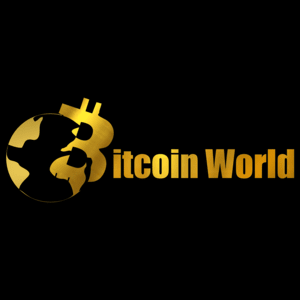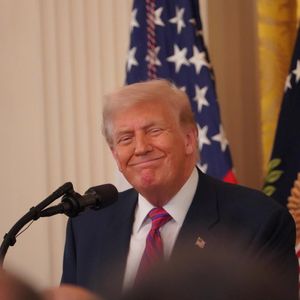Urgent Call: South Korea’s Central Bank Demands Stablecoin Regulations for Financial Stability
5 min read
Are stablecoins truly stable? As the crypto landscape evolves, stablecoins have emerged as a critical, yet potentially volatile, component. Now, South Korea’s central bank, the Bank of Korea (BOK), is raising a red flag. They’re not just suggesting; they’re urging for robust stablecoin regulations to protect the nation’s financial bedrock. For crypto enthusiasts and investors keeping a close eye on global regulatory trends, this development in South Korea is a crucial signal. Let’s dive into why the BOK is so concerned and what this means for the future of stablecoins. Why South Korea’s Central Bank is Concerned About Stablecoins The Bank of Korea isn’t mincing words. In their recently released 2024 payment and settlement report, the BOK clearly articulated its worries regarding the growing influence of stablecoins. Their primary concern? The potential disruption to financial stability if stablecoins gain widespread adoption as an alternative to traditional currency. Here’s a breakdown of their key concerns: Monetary Policy Impact: If stablecoins become a primary medium of exchange, it could significantly weaken the central bank’s control over monetary policy. Imagine a scenario where a large portion of transactions are conducted using stablecoins pegged to a foreign currency. This could limit the BOK’s ability to manage inflation and interest rates within South Korea. Financial Instability Risks: Unregulated stablecoins could introduce new risks to the financial system. Concerns include: Run Risks: If users lose confidence in a stablecoin’s peg, it could trigger massive redemptions, potentially leading to a ‘run’ and destabilizing the entire system. Operational Risks: Stablecoin issuers face operational challenges related to security, custody of reserves, and maintaining the peg. Failures in these areas could have ripple effects. Systemic Risks: Widespread stablecoin adoption could create interconnectedness within the financial system, meaning the failure of a major stablecoin could have broader systemic consequences. Payment System Disruption: The BOK also worries about the potential impact on existing payment systems. If stablecoins become the dominant payment method, it could challenge the efficiency and stability of current infrastructure, potentially leading to fragmentation and inefficiencies. The BOK’s stance is clear: proactive measures are needed. They are advocating for a separate regulatory framework specifically designed for stablecoins. This framework, they believe, is essential to mitigate these potential risks and ensure the continued stability of South Korea’s financial system. The Urgency for Stablecoin Regulations: What Kind of Rules Are Needed? So, what kind of stablecoin regulations is the Bank of Korea likely to push for? While the specifics will need to be debated and legislated, we can anticipate some key areas of focus based on global regulatory discussions and the BOK’s stated concerns: Regulatory Area Potential Focus Why it’s Important Reserve Requirements Mandating stablecoin issuers to hold high-quality, liquid reserves that fully back the value of the stablecoins in circulation. Ensures that stablecoins can maintain their peg and meet redemption requests, reducing run risks. Operational Standards Setting standards for stablecoin issuers related to cybersecurity, risk management, and operational resilience. Minimizes the risk of operational failures that could destabilize the stablecoin and the broader financial system. Consumer Protection Implementing measures to protect stablecoin users, including disclosure requirements, dispute resolution mechanisms, and safeguards against fraud and manipulation. Builds trust in stablecoins and protects retail users from potential harm. Anti-Money Laundering (AML) and Combating the Financing of Terrorism (CFT) Applying AML and CFT regulations to stablecoin issuers and transactions to prevent illicit activities. Ensures stablecoins are not used for illegal purposes and maintains the integrity of the financial system. Oversight and Supervision Establishing clear regulatory oversight and supervisory frameworks for stablecoin issuers, potentially under the purview of the central bank or financial regulatory bodies. Provides ongoing monitoring and enforcement to ensure compliance and address emerging risks. The BOK’s active participation in upcoming legislative discussions is crucial. As they stated, they intend to “actively participate in potential legislative discussions on stablecoins to express its views as a central bank.” This suggests they will be a strong voice advocating for robust and comprehensive crypto regulation , specifically targeting stablecoins. Impact on Monetary Policy: Stablecoins as a Threat? The potential impact of stablecoins on monetary policy is a core concern for central banks globally, not just the Bank of Korea. Traditional monetary policy tools rely on influencing the supply of and demand for the national currency. However, if stablecoins gain traction as a widely used medium of exchange and store of value, they could operate outside the direct control of central banks, potentially weakening their effectiveness. Consider these scenarios: Reduced Demand for National Currency: If people and businesses increasingly use stablecoins for transactions and savings, the demand for the Korean Won could decrease. This could make it harder for the BOK to influence inflation by adjusting interest rates or managing the money supply. Currency Substitution: If stablecoins pegged to foreign currencies become popular in South Korea, it could lead to a form of ‘digital dollarization’ or ‘digital euroization.’ This could erode the BOK’s ability to control domestic monetary conditions and potentially import inflation from other economies. Challenges to Seigniorage: Seigniorage is the profit a central bank makes from issuing currency. Widespread stablecoin adoption could reduce the demand for physical cash and potentially impact the BOK’s seigniorage revenue. To mitigate these risks, central banks like the BOK are exploring various approaches. These include: Central Bank Digital Currencies (CBDCs): Issuing a digital version of the national currency could be one way for central banks to compete with stablecoins and maintain control over the digital payments landscape. South Korea is actively researching CBDCs. Regulation and Oversight: As the BOK is advocating, robust crypto regulation for stablecoins is seen as essential to manage their risks and ensure they operate within a framework that supports monetary policy objectives. International Cooperation: Given the cross-border nature of stablecoins, international cooperation among central banks and regulatory bodies is crucial to develop consistent and effective global standards. Navigating the Future: South Korea’s Path to Stablecoin Regulation and Financial Stability The Bank of Korea’s strong stance on stablecoin regulations signals a proactive approach to managing the evolving crypto landscape. Their call for a dedicated regulatory framework is not just about stifling innovation; it’s about ensuring that financial innovation occurs in a way that supports, rather than undermines, financial stability . South Korea, a nation with a high rate of crypto adoption, is positioning itself to be a leader in responsible crypto regulation. For investors and participants in the crypto market, this development is significant. It suggests that regulatory scrutiny of stablecoins is intensifying globally. While regulations may introduce some constraints, they are also intended to create a more stable and trustworthy environment for the long-term growth of the digital asset space. Keeping a close watch on South Korea’s legislative discussions and the BOK’s input will provide valuable insights into the future direction of stablecoin regulation worldwide. In conclusion, the Bank of Korea’s urgent call for stablecoin regulations is a clear indication of the growing importance of these digital assets and the potential risks they pose. By proactively addressing these challenges, South Korea aims to strike a balance between fostering innovation and safeguarding its financial system. This move underscores a critical trend: crypto regulation , particularly for stablecoins, is no longer a matter of ‘if’ but ‘when’ and ‘how’ across the globe. To learn more about the latest crypto regulation trends, explore our article on key developments shaping crypto regulatory landscape.

Source: Bitcoin World



